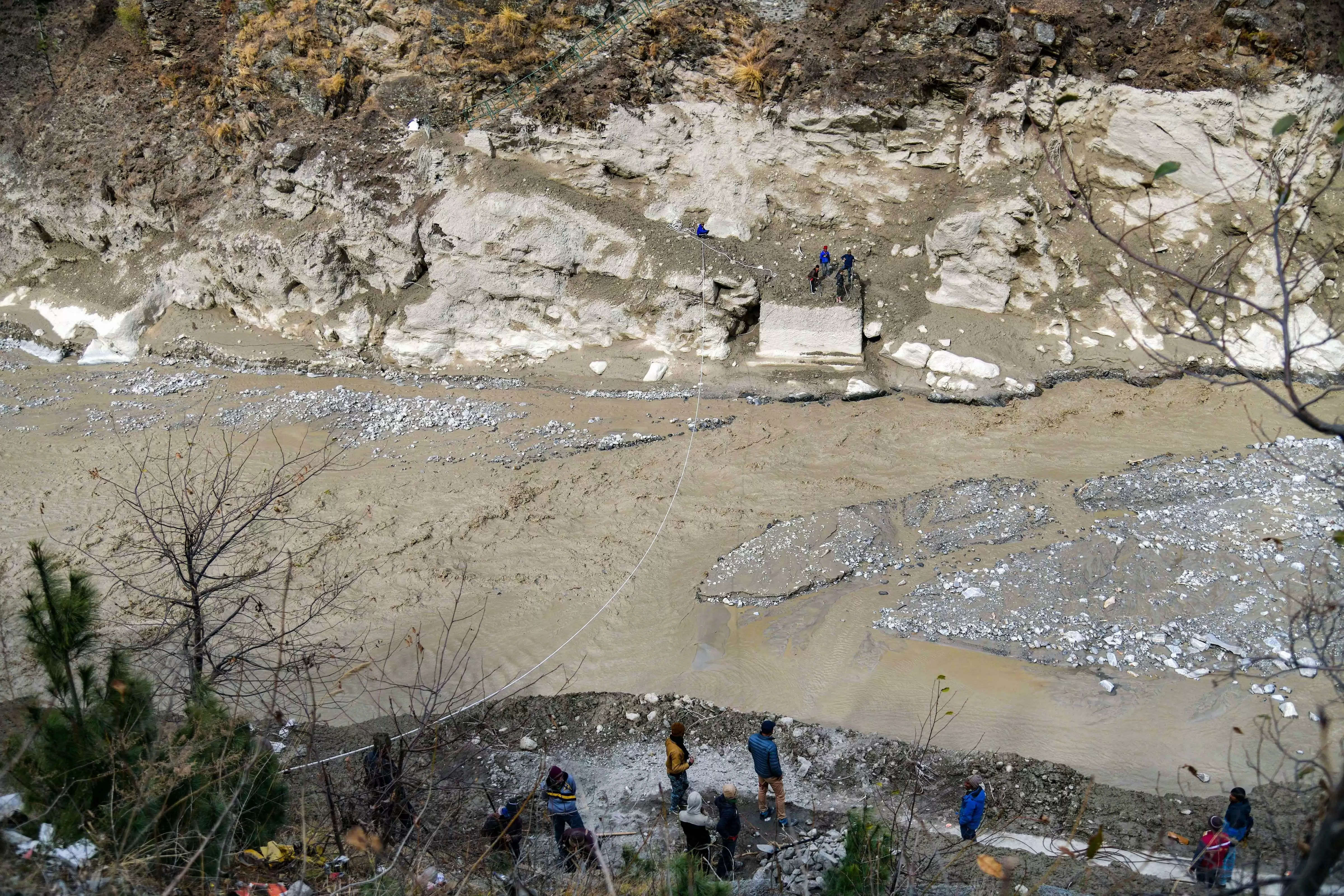Uttarakhand flash floods due to hanging glacier collapse: initial study by institute

New Delhi:
The flash floods in Uttarakhand two days ago was due to the collapse of a hanging glacier, initial observations by scientists at the Wadia Institute of Himalayan Geology suggests.
A hanging glacier is a body of ice that breaks off abruptly at the edge of a precipice or steep slope.
"The event happened in a hanging glacier, adjacent to Raunthi glacier, which originates from Raunthi/Mrigudhani peak (6,063 metres above sea level)," Kalachand Sain, director of the Wadia Institute of Himalayan Geology, said.
The observations also suggest that rock mass weakened over a period of time due to freezing and thawing of snow must have led to the creation of a "weak zone", triggering its collapse, which resulted in the formation of a temporary dam that eventually breached, causing the deadly floods.
Two teams of five glaciologists are studying the reasons behind Sunday's disaster. They also undertook a helicopter survey on Tuesday.
The glaciers around the area feed the Rishiganga river, which meets the Dhualiganga river.
The death toll in the Uttarakhand disaster rose to 32 with six more bodies being recovered, officials said Tuesday, as multiple agencies raced against time to reach about 30 workers trapped inside a tunnel at a power project site and 174 people remained missing.
About 600 rescue workers are involved in the operation, two days after the sudden flood in the Alaknanda river system in Chamoli district that was possibly triggered by an avalanche or glacier burst.
(PTI)
ALSO READ
Also Read: Karnataka to create 10 lakh jobs in IT and related sector by 2025

















